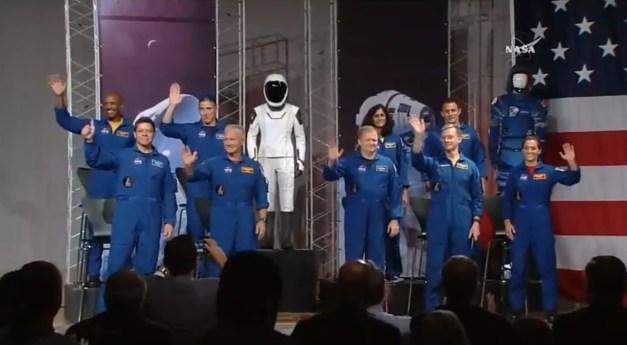 by Chris Tobias
by Chris Tobias
SpaceX has worked with the US military before, but with Thursday’s scheduled launch of the Air Force’s infamous X-37B space plane aboard a Falcon 9 rocket, Elon Musk and company will become a part of conspiracy theory legend.
The X-37B, otherwise known as the Orbital Test Vehicle (OTV), has been referred to by some as “America’s drone space shuttle.” This orbital space plane, which does resemble a smaller version of the space shuttle, has officially flown four missions, which the Air Force said were to “conduct orbital experiments.”
Some have speculated, however, that the vehicle has been to space far more often, and there have even been claims that the Air Force has been flying two of these spacecraft for years, with one always in orbit and one on the ground. If you asked many Americans who know of the existence of the X-37B, they’d probably tell you that they believe its true mission is one of espionage, or perhaps even some “Star Wars-style” military mission similar to those outlined in President Reagan’s Strategic Defense Initiative many decades ago. One need only search “X-37B” on YouTube to find numerous videos by “experts” who describe the OTV as a “mysterious” and “dirty” project that might even be testing an EM drive, some going so far as to claim that the Russians have threatened to expose the Air Force’s “quake plane” to the world.

The US Air Force’s “top secret” X-37B. (Photo: YouTube)
Even the docents who give the tours at Kennedy Space Center apparently love stoking the fires of these wild theories, as I found out firsthand in August of 2015 when my tour group was shown (from a distance, of course) the hangar that housed the X-37B. Our guide, who was himself ex-Air Force, told us with a twinkle in his eye he could only confirm that the hangar was in fact for the X-37B, but that he couldn’t tell us any more because “then he’d have to kill us.”
Are we really to believe that that X-37B is some clandestine weapon, its flights ordered by some cigarette smoking man in the upper echelon of our nation’s military hierarchy in a facility accessible only to those with the highest levels of security clearance? Well, if it were, then consider this– it’d be pretty careless of the US government to allow the Air Force to contract a civilian space company to launch such a super secret space weapon– let alone the one civilian space company that has what is arguably the highest media profile of any on the planet! And that’s not to mention the fact that tourists are permitted within a few hundred yards of the vehicle’s “secret base” at Kennedy Space Center. Sorry, but when it comes to the OTV, I’m a bit more of a Scully than I am a Mulder.
What is possibly true of the X-37B is that the Air Force’s “orbital experiments” collect data that could be useful in the development of future weapons systems and delivery platforms that could be employed beyond Earth’s atmosphere. It is reasonable to assume, then, that the OTV could be a military test plane for space, minus the test pilot.

OTV-5 Mission Patch (Photo: eBay Ireland)
Whatever its purpose, this week’s launch of OTV-5 will mark the fifth official mission of the OTV and the first time that the X-37B will be carried into space by a privately-built, privately-owned rocket– a milestone that is no doubt the result of the fact that SpaceX’s ability to launch more cheaply than anyone around will save the Pentagon, and ultimately us taxpayers, a decent chunk of change over the long haul.
There is a certain irony to the fact that the OTV was built by Boeing, the company that shares the current Commercial Crew Program contract with SpaceX and with whom SpaceX is (unofficially) racing to be the first private company to return American astronauts to space from American soil. Either SpaceX’s Crew Dragon or Boeing’s Starliner will be the first spaceship to launch with a crew of NASA astronauts next year, and if it’s the former, then it is our hope that the ship will bear the name Serenity.
It’s also worth noting that for this launch, both the booster and the payload are reusable. SpaceX plans to recover the first stage of the Falcon 9 at Landing Zone 1 (LZ-1) at Cape Canaveral after it sends the OTV into the black, and the X-37B will return to Earth and land like a conventional aircraft once its mission is complete.
The launch of OTV-5 is currently scheduled for Thursday, September 7. As would befit the launch of a secret space plane, no exact scheduled time for liftoff has been given as of yet. Hurricane Irma, which is bearing down on the Florida coastline, is not expected to affect the launch in any way, but even so the weather is currently less than optimal, putting the odds of a Thursday launch at around 50%. Nonetheless, SpaceX should have plenty of opportunity to get the OTV into Low Earth Orbit before Irma would force them to suspend operations.
Despite the secret nature of the payload, there’s no reason to believe that SpaceX won’t conduct its usual webcast for the launch, which should go live approximately 20 minutes before liftoff on SpaceX’s YouTube channel and at spacex.com.
We may never know the real mission of the X-37B, but when OTV-5 launches this week, we’ll be able to say with confidence that the truth is out there, and this time we have SpaceX to thank for it.
Peace, love and rockets…








 by Chris Tobias
by Chris Tobias



You must be logged in to post a comment.